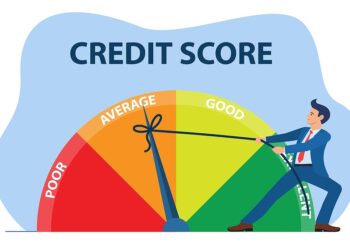Retirement, once a distant concept for many, is a rapidly approaching reality that demands proactive and strategic planning. Far from being an abstract notion, it represents a pivotal life stage where financial independence dictates your choices, freedom, and quality of life. The idea of retirement planning simplified aims to demystify this crucial process, transforming what often feels overwhelming into an actionable, understandable blueprint. In this comprehensive guide, we’ll strip away the complexities, offering clear insights into building a robust retirement nest egg, regardless of your current age or financial standing. We’ll explore various savings vehicles, investment strategies, and essential considerations, empowering you to navigate your journey towards a comfortable and fulfilling retirement, with a special emphasis on the unique landscape of Indonesia.
Understanding the “Why” and “When” of Retirement

Before diving into the “how,” it’s vital to grasp the fundamental motivations behind retirement planning and to set a realistic timeline.
A. Defining Your Retirement Vision
Your retirement isn’t just about stopping work; it’s about starting a new chapter. What does that chapter look like for you?
A. Leisure and Hobbies: Do you envision traveling the world, pursuing long-neglected hobbies, or spending more time with family?
B. Living Location: Will you stay in your current home, downsize, move to a different city or country, or even retire to a more serene area in Indonesia like Bali or Yogyakarta?
C. Lifestyle Costs: Will your retirement lifestyle be similar to your current one, more frugal, or more luxurious? This directly impacts how much you need to save.
D. Purpose and Engagement: Many retirees seek purpose beyond work. Will you volunteer, start a passion project, or engage in part-time work?
Defining this vision clearly provides powerful motivation and helps you quantify your financial needs.
B. The Reality of Retirement Expenses
It’s a common misconception that expenses drastically decrease in retirement. While some work-related costs disappear, others may increase.
A. Healthcare Costs: This is often the biggest wildcard. As you age, healthcare expenses tend to rise significantly. While BPJS Kesehatan in Indonesia provides fundamental coverage, supplemental insurance or dedicated savings for out-of-pocket costs may be crucial.
B. Travel and Leisure: If your vision includes travel or more leisure activities, these will be significant expenses.
C. Inflation: The purchasing power of your money erodes over time due to inflation. What Rp1,000,000 buys today will buy less in 20 or 30 years. Your retirement savings must account for this.
D. Unexpected Costs: Home repairs, car replacements, or family emergencies can still arise, necessitating a robust financial buffer.
Estimating these future expenses is a crucial step in setting your retirement savings goal.
C. The Importance of Starting Early
This is perhaps the most critical principle in retirement planning, often underestimated due to the incredible power of compounding.
A. Compounding Interest: Money invested early has more time to grow, and its earnings also start earning returns. This exponential growth is often called the “eighth wonder of the world.” Even small contributions made consistently over decades can accumulate into substantial sums.
B. Less Pressure Later: Starting early means you can save smaller amounts monthly to reach your goal, rather than having to contribute much larger sums later in life when other financial obligations (e.g., children’s education, mortgage) might be higher.
C. Mitigating Market Volatility: Investing for the long term allows you to ride out short-term market fluctuations, as historical data shows that markets tend to recover and grow over decades.
D. Maximizing Tax Advantages: Early contributions to tax-advantaged retirement accounts allow your money to grow tax-deferred or tax-free for a longer period, significantly boosting your net returns.
Building Your Retirement Nest Egg
To simplify retirement planning, focus on leveraging the right types of accounts and investments.
A. Employer-Sponsored Retirement Plans
If available, these are often the best place to start due to potential employer contributions and tax advantages.
A. 401(k) (U.S. Equivalent): While directly not available in Indonesia, the concept of employer-sponsored plans for retirement savings is crucial. In many countries, these plans allow pre-tax contributions, reducing your current taxable income, and investments grow tax-deferred.
B. Employer Match: If your employer offers a matching contribution (e.g., they contribute Rp1 for every Rp1 you save up to a certain percentage of your salary), always contribute at least enough to get the full match. This is essentially free money and provides an immediate, guaranteed return on your investment.
C. Diversified Investment Options: These plans usually offer a selection of mutual funds, ETFs, and target-date funds, simplifying investment choices.
D. Jaminan Pensiun (JP) and Dana Pensiun Pemberi Kerja (DPPK) in Indonesia:
- Jaminan Pensiun (JP): Part of BPJS Ketenagakerjaan, this is a mandatory social security program for employees in Indonesia, aiming to provide a pension upon reaching retirement age. Contributions are made by both employer and employee. While it provides a basic safety net, it’s generally not sufficient for a comfortable retirement alone.
- Dana Pensiun Pemberi Kerja (DPPK): These are private pension funds set up by employers for their employees in Indonesia. Contributions may come from the employer, employee, or both, and the funds are invested by professional managers. These often offer more substantial benefits than JP and can be an excellent vehicle for retirement savings.
B. Individual Retirement Accounts (IRAs – U.S. Equivalent)
These are personal retirement savings vehicles that offer various tax benefits. While not identical, similar concepts of individual long-term savings exist in Indonesia.
A. Traditional IRA (Conceptually): Contributions may be tax-deductible, and investments grow tax-deferred until retirement, when withdrawals are taxed as ordinary income. This is beneficial if you expect to be in a lower tax bracket in retirement than you are now.
B. Roth IRA (Conceptually): Contributions are made with after-tax money, but qualified withdrawals in retirement are completely tax-free. This is particularly appealing if you expect to be in a higher tax bracket in retirement or want tax-free income in your later years.
C. Dana Pensiun Lembaga Keuangan (DPLK) in Indonesia: This is an individual voluntary pension fund in Indonesia, managed by financial institutions. Individuals can open a DPLK account and make regular contributions. While contributions are generally not tax-deductible upfront, the investment returns are typically tax-exempt until withdrawal, offering a form of tax-deferred growth similar to a Traditional IRA.
D. Investment-Linked Insurance Products (Unit Link): While primarily insurance products, Unit Link policies in Indonesia have an investment component where premiums are invested in various funds. They can serve as a long-term savings vehicle, and the investment growth can be tax-exempt, similar to a Roth IRA, if certain conditions are met upon maturity or withdrawal. However, it’s crucial to understand the fees and insurance charges involved.
C. Health Savings Accounts (HSAs – U.S. Equivalent)
If you have a high-deductible health plan (HDHP), an HSA is a triple tax-advantaged account in the U.S.: contributions are tax-deductible, investments grow tax-free, and qualified medical withdrawals are also tax-free. While no direct equivalent exists in Indonesia with the same triple tax benefits, the principle of saving specifically for future healthcare costs is paramount. Consider setting aside funds in a separate high-yield savings account or a low-risk investment for this purpose.
D. Regular Investment Accounts (Brokerage Accounts)
Beyond tax-advantaged accounts, a standard brokerage account allows you to invest in a wide range of assets, offering flexibility.
A. Flexibility: Funds in these accounts can be withdrawn at any time without age restrictions or penalties (though capital gains might be taxed). This makes them suitable for early retirement or other long-term goals.
B. Diversified Investments: You can invest in stocks, bonds, mutual funds (Reksa Dana), ETFs, and more.
C. Taxable Gains: Investment gains in these accounts are typically subject to capital gains tax when realized. In Indonesia, capital gains from stock sales are subject to a final tax on transaction value, and dividends may also be taxed.
Smart Investment Strategies for Retirement Growth

Choosing the right accounts is just the beginning. How you invest within those accounts is equally critical.
A. Asset Allocation
Asset allocation is the most important investment decision you’ll make. It involves determining the mix of different asset classes (e.g., stocks, bonds, cash) in your portfolio based on your risk tolerance, time horizon, and financial goals.
A. Time Horizon: Generally, younger investors with a longer time horizon (many years until retirement) can afford to take on more risk, with a higher allocation to equities (stocks), which offer greater growth potential. As you approach retirement, gradually shift towards a more conservative allocation with a higher proportion of bonds and cash to preserve capital.
B. Risk Tolerance: Understand your emotional capacity for market fluctuations. If market downturns cause significant anxiety, a more conservative allocation might be suitable, even if it means potentially lower returns.
C. Diversification: Never put all your eggs in one basket. Diversify across different asset classes, industries, and geographies. In Indonesia, this means investing in various sectors on the IDX, and potentially considering global investments through relevant funds.
B. Low-Cost Index Funds and ETFs
For most investors, especially those simplifying retirement planning, low-cost index funds and ETFs are ideal.
A. Diversification: They provide instant diversification across hundreds or thousands of companies, reducing company-specific risk. For example, an LQ45 ETF in Indonesia offers exposure to the 45 most liquid and largest companies on the IDX.
B. Lower Fees: They typically have much lower expense ratios compared to actively managed mutual funds. Over decades, high fees can significantly erode your returns.
C. Passive Management: They aim to track a market index rather than trying to beat it, which historically has been a winning strategy over the long term.
C. Dollar-Cost Averaging
This strategy involves investing a fixed amount of money at regular intervals, regardless of market fluctuations.
A. Mitigates Volatility: By investing consistently, you buy more shares when prices are low and fewer when prices are high, averaging out your purchase price over time. This removes emotional decision-making from investing.
B. Automated Discipline: It promotes consistent saving and investing, crucial for long-term wealth accumulation.
D. Rebalancing Your Portfolio
Over time, your asset allocation can drift from your target due to varying asset performances. Rebalancing involves periodically adjusting your portfolio back to your desired allocation.
A. Maintain Risk Profile: If stocks have performed exceptionally well, they might make up a larger percentage of your portfolio than intended, increasing your risk. Rebalancing involves selling some strong performers and buying more of the underperforming assets to return to your target percentages.
B. Discipline and Opportunity: It forces you to “buy low and sell high” in a disciplined manner, though not perfectly.
E. Long-Term Perspective
Retirement planning is inherently a long-term endeavor.
A. Ignore Short-Term Noise: Resist the urge to react emotionally to daily market fluctuations or economic headlines. Focus on your long-term goals.
B. Stay Invested: Market downturns are a normal part of investing. Trying to time the market is almost impossible. The best strategy for most is to stay invested through various cycles.
Key Considerations for Retirement in Indonesia
Planning for retirement in Indonesia involves understanding local specifics related to social security, voluntary pensions, and the investment landscape.
A. BPJS Ketenagakerjaan
The BPJS Ketenagakerjaan program is a mandatory social security system for workers in Indonesia, encompassing several programs, two of which are directly related to retirement:
A. Jaminan Hari Tua (JHT): A savings program that can be claimed by participants when they reach retirement age (currently 56, increasing gradually), experience permanent disability, or pass away. It’s essentially a lump-sum benefit based on accumulated contributions and investment returns.
B. Jaminan Pensiun (JP): This program provides a monthly pension benefit to participants upon reaching retirement age, provided they meet certain contribution periods. It aims to provide a basic income stream in retirement.
While crucial, these programs are often designed to provide a basic level of support and may not be sufficient for a comfortable retirement lifestyle, necessitating additional personal savings and investments.
B. Voluntary Pension Funds (DPLK & DPPK)
These are managed by financial institutions (DPLK) or specific employers (DPPK) and offer additional avenues for retirement savings.
A. DPLK (Dana Pensiun Lembaga Keuangan): Individual employees or self-employed individuals can voluntarily open DPLK accounts. Contributions are invested by professional managers, and the accumulated funds and returns are disbursed upon retirement. The growth of these funds is often tax-exempt until withdrawal.
B. DPPK (Dana Pensiun Pemberi Kerja): Employers establish these funds for their employees. They offer a more structured and often more substantial retirement benefit beyond BPJS.
Actively contributing to these funds, especially if your employer contributes to a DPPK, is a smart move for tax efficiency and professional management.
C. Diversifying Investments in the Indonesian Market
Indonesia offers a range of investment opportunities for retirement savings.
A. Indonesia Stock Exchange (IDX): Invest in blue-chip stocks, index funds tracking the LQ45 or IDX30, or sectoral ETFs.
B. Obligasi (Bonds): Consider Surat Utang Negara (SUN) for low-risk fixed income, or corporate bonds for potentially higher yields.
C. Reksa Dana (Mutual Funds): Choose from various types (equity, bond, money market, mixed) based on your risk profile and time horizon.
D. Gold Savings: Many banks and digital platforms in Indonesia offer easy ways to save or invest in gold, which can act as a hedge against inflation.
E. Property/Real Estate: For larger sums, direct property investment or through DIRE (Dana Investasi Real Estat) can provide rental income and capital appreciation.
D. Considering Inflation and Rupiah Depreciation
Indonesia, like many emerging economies, can experience higher inflation rates than developed countries. The Rupiah can also experience depreciation against major global currencies.
A. Inflation Hedging: Invest in assets that historically perform well during inflationary periods, such as real estate, commodities, or inflation-protected bonds.
B. Currency Diversification: While primary retirement savings will likely be in Rupiah, consider a small portion of your investments in global assets or stable foreign currencies if possible, to diversify currency risk.
Advanced Strategies and Fine-Tuning Your Plan
Once the basics are in place, consider these refinements for a truly optimized retirement plan.
A. The “Bucket Strategy” for Retirement Income
Once retired, managing your withdrawal strategy is crucial to ensure your money lasts. The “bucket strategy” organizes your retirement savings into different “buckets” based on their liquidity and risk.
A. Bucket 1 (1-3 years of expenses): Held in cash or highly liquid, low-risk investments (HYSA, money market funds). This covers immediate expenses and provides peace of mind during market downturns.
B. Bucket 2 (3-10 years of expenses): Held in moderately conservative investments (bonds, balanced mutual funds). This provides income as Bucket 1 is depleted.
C. Bucket 3 (10+ years of expenses): Held in growth-oriented investments (stocks, equity mutual funds). This bucket allows for long-term growth and replenishes the other buckets.
B. The “Retirement Spending Smile”
Research suggests that retirement spending often follows a “smile” pattern: higher expenses in early retirement (travel, hobbies), lower in mid-retirement (less active), and higher again in late retirement (increased healthcare costs). Account for this variability in your planning.
C. Downsizing and Housing Options
Your home is likely your largest asset. How you manage it can significantly impact your retirement finances.
A. Downsizing: Selling a large family home and moving into a smaller, less expensive property can free up substantial capital for retirement.
B. Reverse Mortgage (if available): In some countries, a reverse mortgage allows homeowners to convert a portion of their home equity into cash without selling the house. This can provide income but has complexities and fees. (Less common in Indonesia).
C. Considering Location: Moving to a lower cost of living area within Indonesia (e.g., from Jakarta to a regional city) can significantly stretch your retirement savings.
Conclusion
Retirement planning simplified is fundamentally about empowering yourself with knowledge and consistent action. It’s about moving from a reactive approach to a proactive, intentional journey towards financial independence.
By clearly defining your retirement vision, understanding the realities of future expenses, and leveraging the immense power of starting early and compounding, you lay an unshakeable foundation. Strategically utilizing employer-sponsored plans (JP, DPPK), individual retirement vehicles (DPLK, Unit Link), and diversified investments across the Indonesian and global markets will build your nest egg.
Remember that financial discipline, continuous learning, and adaptability are your most valuable assets. The path to a comfortable and fulfilling retirement requires foresight, but it is entirely within your reach. Start today, refine your plan consistently, and look forward to a future where your finances empower your dreams.












